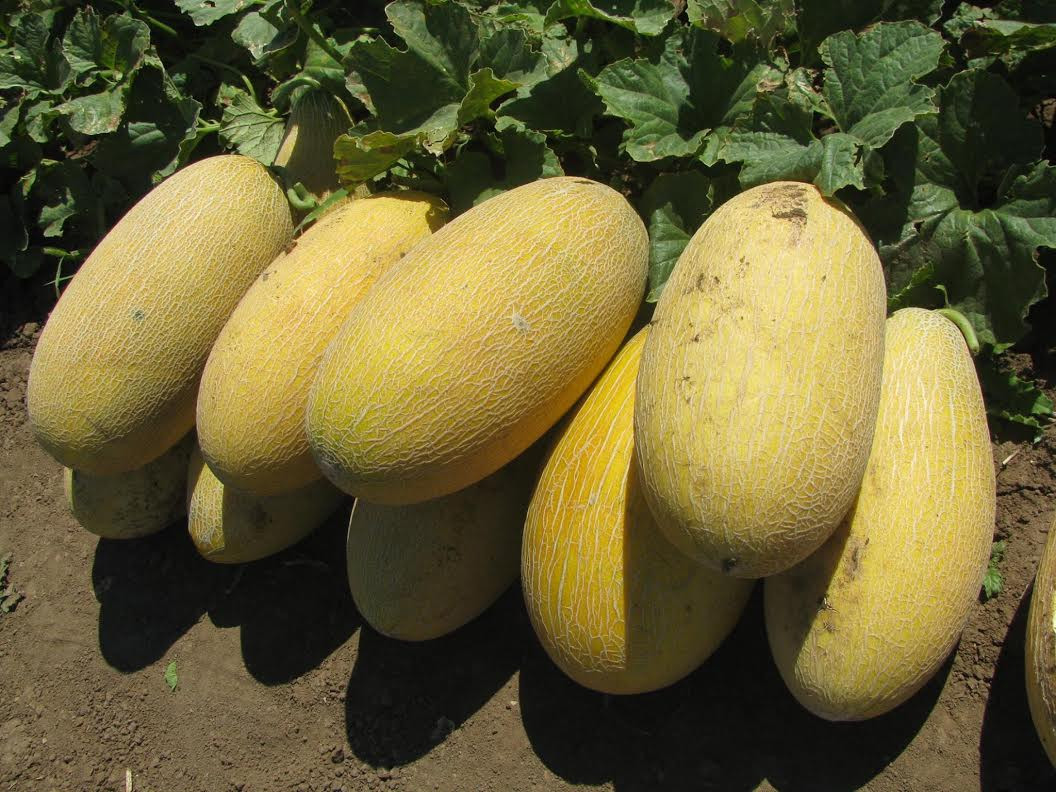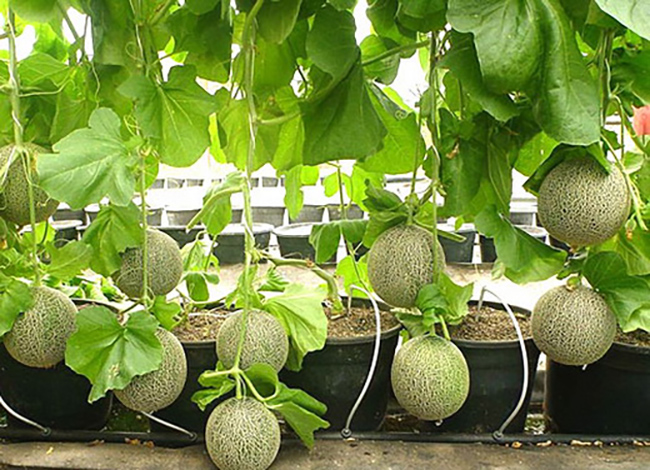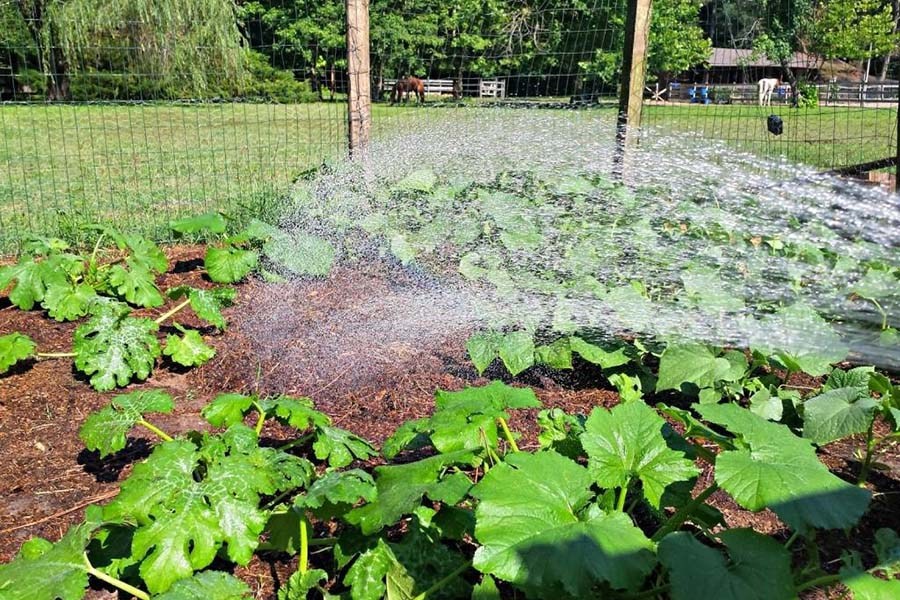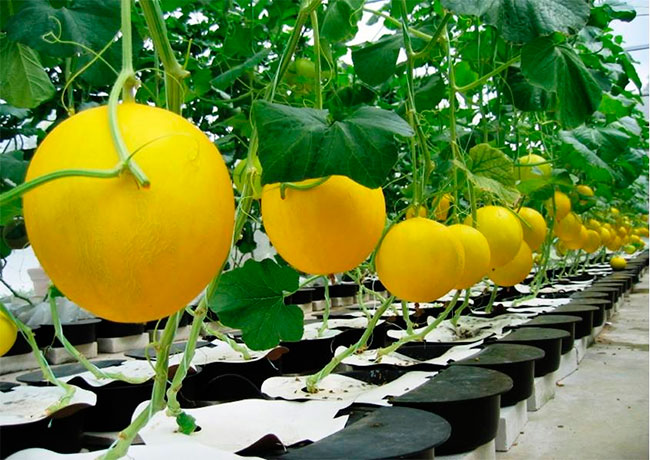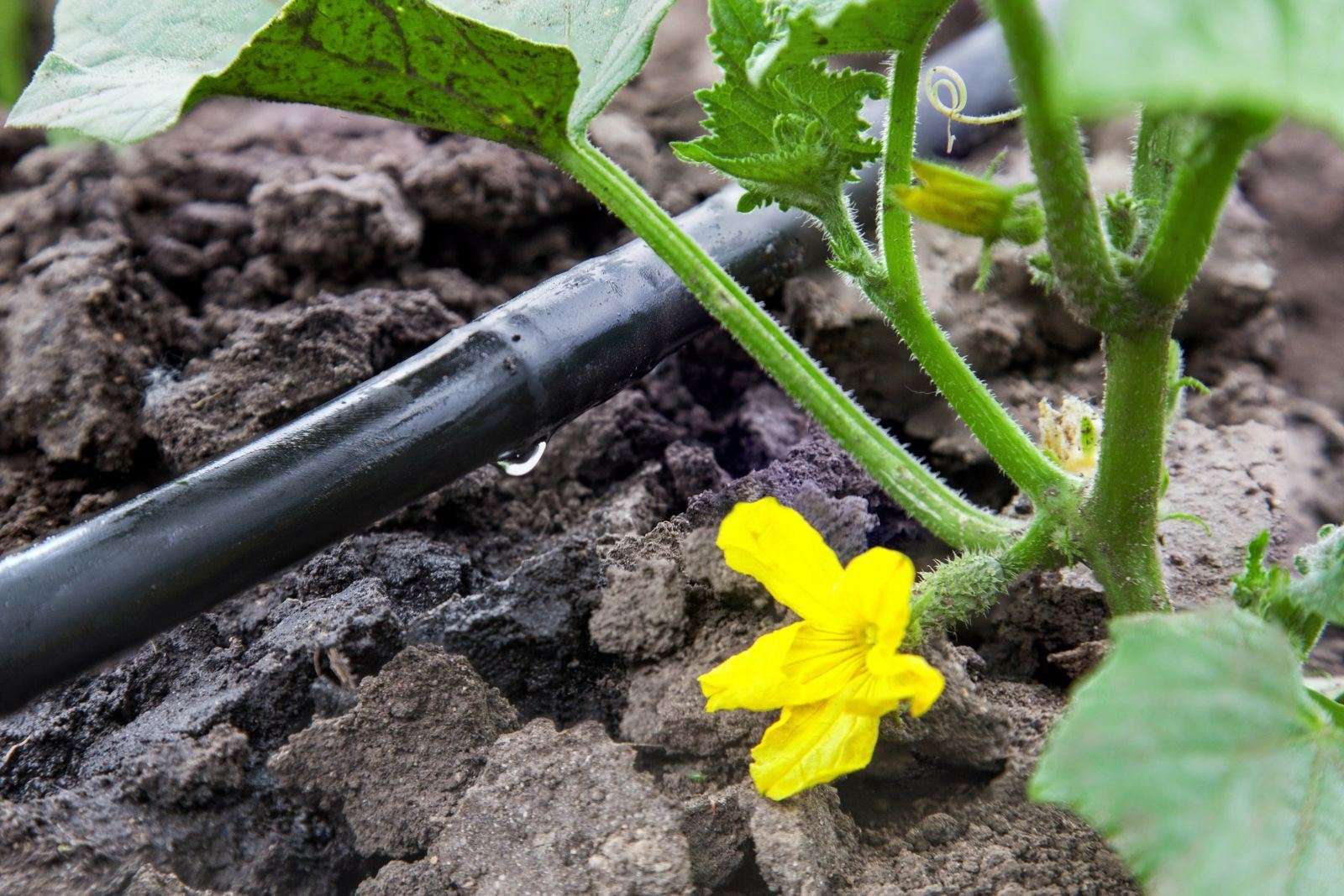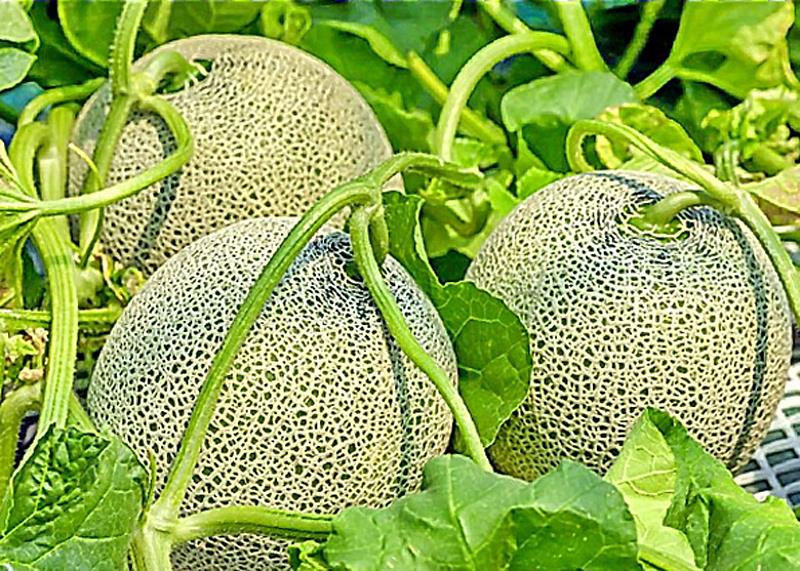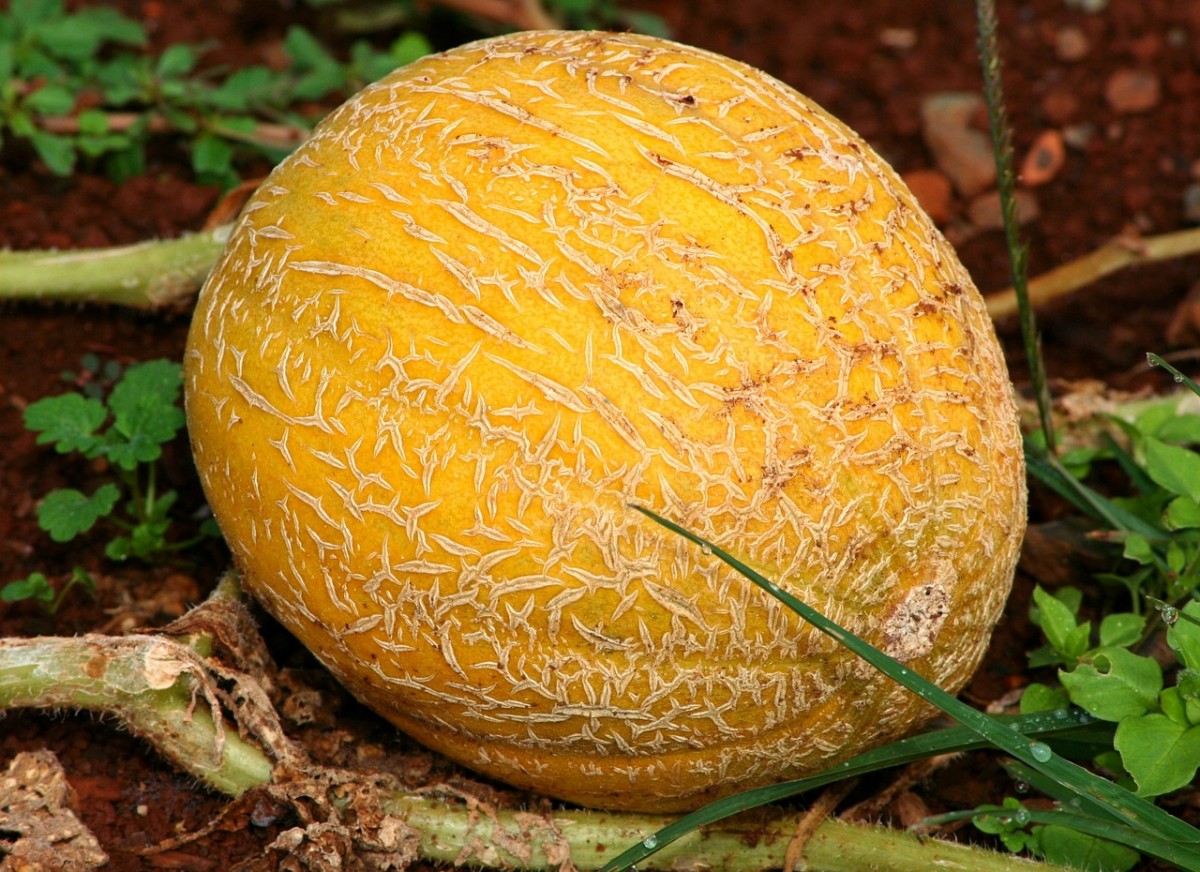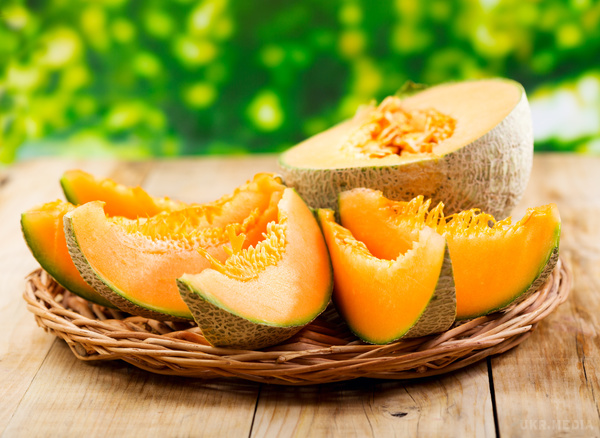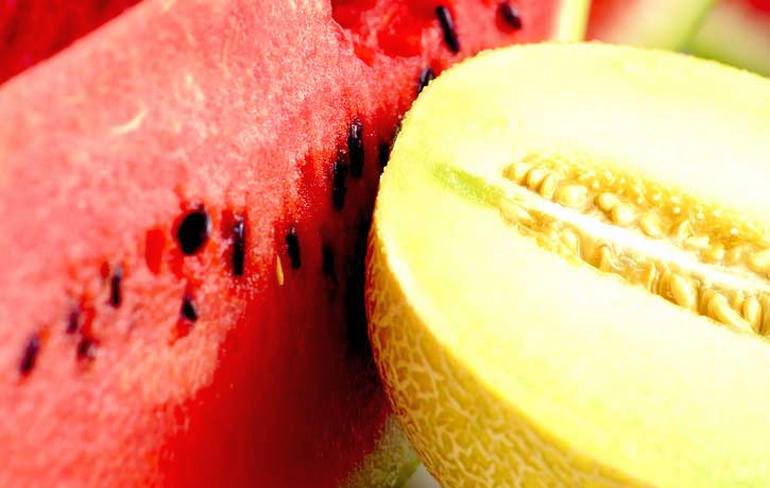Content:
Melon is a rather capricious culture, like other melons. Proper watering is the key to a good harvest, but it often confuses inexperienced gardeners: how to water melons without harming them? Each stage of plant development requires special moisture standards, only their strict observance can help achieve the goal. And the purpose of the melon growers is one - to obtain a bountiful harvest from healthy plants.
Culture information
Melon is a popular herbaceous annual. It has powerful roots extending 40 cm into the soil. The stem of the plant is branching, creeping, about 4 m long. The fruit is a false berry, the size of which depends on the variety and growing conditions. Melon seeds emerge one week after planting. The plant gives flowers of different sexes. In a greenhouse, it needs pinching. Fruits complete development approximately one month after setting.
Demanding on light and warmth, the optimum air temperature for growing is from 25 ° C during the daytime, from 19 ° C at night.
Loves space. Poorly tolerates damp shaded areas, lowlands. The optimal soil for growing good melons is light loam, black soil.
Due to the long root, the plant is able to get moisture from a sufficiently large depth, so excessive watering is not required for it and is even contraindicated.
Watering from germination to fruit ripening
Germination stage
Small melons that have recently emerged from the ground are very vulnerable. This is especially true for the root system. Young plants need daily abundant watering. Otherwise, they quickly weaken and die. Before sprouting, the soil is moistened with a spray bottle.
Ovary formation stage
Although a long time has passed since the moment when the melons rose, they continue to need watering. Outdoor plants are watered as needed. The soil surface on the garden bed should always remain slightly damp. It is also important at this stage to get rid of weeds in time, taking away moisture and nutrients from melons. And do not forget to loosen the beds: watering compacts the soil.
Stage before fruit ripening
At this stage, watering can be reduced. An already sufficiently developed root system will provide the plant with moisture by itself, taking it from the lower layers of the soil. It will be enough to water melon every 7 days. When the fruits reach the desired size, it will be possible to completely stop moistening the soil. Timely removal of weeds at this stage remains relevant.
General rules for watering
How often and how much to water the melons so as not to harm them? To do this, it is enough to learn a few simple rules:
- For melons, watering with water heated to 22 ° C is preferable. Warm moisture evaporates more slowly and the soil under the melon will stay moist longer. In addition, watering with cold water provokes the onset of diseases;
- Each bush consumes from 3 to 7 liters of water. The exact dosage will depend on the stage of plant development;
- Starting from the flowering stage, it is worth increasing the frequency of watering, but using less water. For the first 5 days of flowering, watering is completely canceled.This stimulates the formation of female flowers on the plant;
- When watering, care must be taken, water that gets on the root collar of the plant can provoke the appearance of foci of rot;
- Melons do not like watering "over the leaves". They prefer dry air, so water is carefully poured into the holes or grooves, avoiding contact with the leaves;
- Melons have small extra roots on their lashes that help the main root system supply water to the plant. Therefore, it is necessary to moisten the soil under the melon culture not only at the root, but also along the entire length.
Outdoor watering principles
In order for a melon growing in open ground not to get sick and to develop actively, watering should be sufficient. It is not necessary to fill the plant, but it is also not worth saving on water: drought brings melons no less harm than flooding. Lack of moisture can lead to the fact that some seeds will not sprout, plants will develop slowly, flowers and ovaries will crumble, and fruits will deform.
Watering melons, like any other crop, is done in the early morning or at sunset. This will help avoid sunburn caused by drops on the leaves. To prevent water from getting on the root collar of the plant, it is necessary to form a small earthen tubercle during planting and place the plant on it. A small hole is dug around the tubercle, which will later be useful for watering.
When watering, water should penetrate into the soil to a depth of about 40 cm. Then the plant is sufficiently saturated with moisture. To understand that it's time to water the melons, you can use the following method. A layer of soil is removed (about 10 cm deep), a little earth is taken from below and squeezed in the palm of your hand. If the soil is wet, it clumps together. If it doesn't, it's time to take care of watering.
For southern melons located in Central Asia or Ukraine, irrigation systems are usually organized. Water entering the soil in small quantities is quickly warmed by the warm soil surface.
In the southern regions, economical and practical drip irrigation is organized, and in Central Russia, in dachas and vegetable gardens, it is better to water melons with warm water, in the grooves.
Table of norms for watering melons in the open field
| Seedling | Before the flowers appear | Flowering phase | Fruiting phase | |
|---|---|---|---|---|
| Required volume of water | 0.1 - 0.5 l | 2-3 l | 5-7 l | 10 l |
| Moisture depth | 30 - 40 cm | 50-60 cm | 50-60 cm | 60-70 cm |
| Watering frequency | 1 per day | 1 time in 2 days | 2 times in 7 days | 1 time in 7 days |
The data given in the table must be adjusted depending on the weather conditions in the melons growing area.
Watering melons in a greenhouse
In the first days after planting seedlings in the greenhouse, watering is not required. When growing a melon in a greenhouse made of polycarbonate or other material, it is worth taking into account its dislike for waterlogged air. For this reason, it is advisable to plant melons in a separate greenhouse, away from crops that prefer moist air, such as cucumbers. Neighborhood with eggplants, tomatoes and peppers is acceptable.
It makes sense to water the plant only until the fruit grows to the size of a large apple. Then the soil moisture is stopped. Otherwise, the melon will lose its taste, become watery and unsweetened.
Greenhouse melons are watered with exceptionally warm water, the temperature of which is about 33 ° C. In the ovary phase, the soil needs to be moistened more abundantly: the plant needs moisture to form the fruit. This is especially true for vertical landings.
In order to avoid the appearance of putrefactive foci, melons in the greenhouse are watered at the root, trying to avoid getting on the leaves and other parts of the plant. You should step back from the root collar to protect it from water ingress. It is best to dig grooves on the sides of each row and let water from a hose through them with a slight pressure. When flowering begins, watering the melon in the greenhouse should be reduced. The bushes on which the fruits are already ripening are also watered with caution. Air humidity during this period should be low, all sources of moisture (for example, containers with water, buckets) should be removed from the greenhouse. This will help avoid unnecessary evaporation.
As well as growing outdoors, greenhouse melons are watered in the morning or evening. The best irrigation method for these conditions is drip.
In a greenhouse, it is important to provide the plantings with access to fresh air, to carry out more frequent ventilation.
Once a week, a top dressing is added to the water, which the melons are well absorbed through the root system.
In order to delight melons with tasty and large fruits, it is necessary to carry out all the necessary procedures on time and competently, the most important of which is watering. Both excess and lack of moisture are detrimental to the plant. Throughout the season, depending on the degree of development of the plant, it is necessary to maintain a balance by choosing a certain dosage of moisture. This also applies to greenhouse sissies, and more hardy open field melons.
